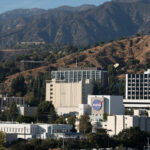Now Reading: Robotic Collaboration Transforms Space Exploration and Medicine
-
01
Robotic Collaboration Transforms Space Exploration and Medicine
Robotic Collaboration Transforms Space Exploration and Medicine


The melding of human cognition with robotic dexterity is one of the most fascinating frontiers of modern technology. In environments where human presence is challenging or outright impossible, the ability to remotely control robotic systems opens new pathways for exploration and innovation.
Recent advancements in robotic systems have demonstrated remarkable capabilities, especially in fields such as space exploration, medical assistance, and hazardous material handling. Robotics is no longer confined to industrial applications; it has evolved into a partner for humanity, capable of performing complex tasks that were once thought to be the sole province of human hands.
One particularly engaging experiment involved a team of robots manipulating elements of a simulated Martian landscape. Conducted in Germany, this initiative was part of the Surface Avatar project, a collaborative effort between the European Space Agency (ESA) and the German Aerospace Center (DLR). The experiment allowed an astronaut aboard the International Space Station to remotely control a fleet of robotic assistants, showcasing how human minds can effectively communicate with robotic hands over vast distances.
The experiment focused on several key areas:
- Autonomy: The robots were equipped with advanced sensors and decision-making algorithms that allowed them to operate semi-autonomously. This meant that while the astronaut could guide their actions, the robots also had the capability to make decisions based on their environment, adapting to unforeseen challenges without constant human oversight.
- Realism: By simulating the Martian landscape, researchers could assess the robots’ performance in a controlled but realistic setting. This kind of simulation very important for future missions where immediate human intervention is not feasible.
- Collaboration: The cooperation between the astronaut and the robotic systems exemplified a new paradigm in teamwork. It allowed for the merging of human intuition—such as quick decision-making and problem-solving—with the precision and reliability of robotic systems.
Space exploration isn’t the only arena where this synergy is having a profound impact. In the medical field, robotic systems are revolutionizing surgical procedures. Surgeons can now use robotic arms that offer greater precision than human hands, reducing recovery times and improving outcomes. The da Vinci Surgical System, for instance, enables less invasive procedures, allowing surgeons to operate with enhanced visibility and maneuverability.
Moreover, robotic systems are being employed in hazardous environments, such as disaster sites or chemical spill clean-ups, where human lives are at risk. These robots can navigate treacherous terrains and conduct searches or repairs where it would be unsafe for humans.
As we continue to develop these technologies, ethical considerations must guide the exploration of human-robot collaboration. Questions surrounding trust, accountability, and the potential for misuse must be addressed as robotic systems become more autonomous. For instance, in warfare, the use of drones and other robotic systems raises ethical dilemmas regarding decision-making in life-and-death situations.
Additionally, the integration of advanced AI with robotics presents exciting prospects and challenges. The development of machine learning algorithms allows robotic systems to learn from their experiences, improving their performance over time. A notable example includes Boston Dynamics’ robotic dogs, which can navigate complex environments autonomously, learning from each interaction.
While the horizon is filled with possibilities, it is essential to emphasize the need for interdisciplinary collaboration. Engineers, scientists, ethicists, and policymakers must work together to shape the future of human-robot interactions. This partnership will ensure that as we advance technologically, we also maintain the values and ethics that are fundamental to humanity.
The collaboration between human minds and robotic hands is a multifaceted endeavor, rich with opportunities for innovation across various domains. The potential of this synergy is only beginning to be realized, and as technology continues to evolve, the implications for society are both profound and far-reaching.
Stay Informed With the Latest & Most Important News
Previous Post
Next Post
-
 01From Polymerization-Enabled Folding and Assembly to Chemical Evolution: Key Processes for Emergence of Functional Polymers in the Origin of Life
01From Polymerization-Enabled Folding and Assembly to Chemical Evolution: Key Processes for Emergence of Functional Polymers in the Origin of Life -
 02Panasonic Leica Summilux DG 15mm f/1.7 ASPH review
02Panasonic Leica Summilux DG 15mm f/1.7 ASPH review -
 03How New NASA, India Earth Satellite NISAR Will See Earth
03How New NASA, India Earth Satellite NISAR Will See Earth -
 04And Thus Begins A New Year For Life On Earth
04And Thus Begins A New Year For Life On Earth -
 05Astronomy Activation Ambassadors: A New Era
05Astronomy Activation Ambassadors: A New Era -
06SpaceX launch surge helps set new global launch record in 2024
-
 07Two Black Holes Observed Circling Each Other for the First Time
07Two Black Holes Observed Circling Each Other for the First Time




















